- Home
- Gerald Durrell
Ark on the Move
Ark on the Move Read online
Bello:
hidden talent rediscovered!
Bello is a digital only imprint of Pan Macmillan, established to breathe new life into previously published, classic books. At Bello we believe in the timeless power of the imagination, of good story, narrative and entertainment and we want to use digital technology to ensure that many more readers can enjoy these books into the future. We publish in ebook and Print on Demand formats to bring these wonderful books to new audiences.
About Bello:
www.panmacmillan.com/imprints/bello
About the author:
www.panmacmillan.com/author/geralddurrell
By Gerald Durrell
My Family and Other Animals
A Zoo in My Luggage
Birds, Beats and Relatives
Garden of the Gods
The Overloaded Ark
The Talking Parcel
The Mockery Bird
The Donkey Rustlers
Catch me A Colobus
Beasts In My Belfry
The New Noah
The Drunken Forest
The Whispering Land
Rosy is My Relative
Two in the Bush
Three Singles to Adventure
The Ark’s Anniversary
Golden Bats and Pink Pigeons
Menagerie Manor
The Picnic and Suchlike Pandemonium
The Bafut Beagles
Marrying off Mother and Other Stories
The Aye-Aye And I
Fillets of Plaice
Ark on the Move
Encounters with Animals
The Stationary Ark
Gerald Durrell
ARK ON THE MOVE
This is for
Monsieur le Professeur Roland Albignac
otherwise known to us as
Professor ‘Pas De Problème’
without whose help we could have achieved little
Contents
Foreword
1. Landing on the Dodo’s Grave
2. The Dying Island
3. The Bat Colony of Rodrigues
4. The Treasure Island of Madagascar
5. The Dance of the Lemurs
6. Nosy Kombo and the Crocodile Dance
7. Lament of the Rain Forest
Acknowledgements
A Message from the Durrell Wildlife Conservation Trust
Foreword
Even the most cautious of travellers, would, I think, be thrilled at the idea of visiting a remote tropical island. There seems to be something about tropical islands that stirs the blood of even the most unadventurous souls. So you can imagine how excited, Lee, my wife, and I were when we got the chance to visit not just one but four tropical islands in the Indian Ocean, and one of them uninhabited at that. Let me explain how this piece of luck came about.
I have been associated with islands, one way or another, for most of my life and became island mad—a confirmed islomaniac—at a very early age by being brought up on the wonderful Greek island of Corfu. It was here that I could first indulge my passion for natural history, and I scoured the island, both on my donkey and in my boat, to secure specimens for my home museum and live creatures to keep and study. Everything from eagle-owls to sea-horses, from snakes to scorpions, was grist to my mill. Naturally this early training made me want to see more of the world and its plant and animal life, so I became an animal collector for zoos and travelled far and wide and met and brought back to Europe an enormous variety of fascinating creatures. But after a few years I became dissatisfied for two reasons. Firstly, I disliked having to part with my animals at the end of the trip, and secondly, I was not sure that the zoos I dealt with were properly oriented.
As I traveled all over the world I could see how animal life was becoming more and more endangered by the encroachment of man. In the case of many species, their numbers had been so drastically reduced in the wild state, either by hunting pressures or by habitat destruction, that I knew it would be impossible for them to recover unaided. What these harried creatures needed were sanctuaries where they could live and breed in safety and recover their numbers. This sort of sanctuary should, I thought, be provided by zoological gardens, but in most cases the zoos in question were not far-sighted enough to realise that they were probably the last hope for the survival of many magnificent animals. So I decided to found a zoo of my own, on the island of Jersey, one of the Channel Islands. It was to be a zoo with a difference, one that concentrated on the breeding of the species with the hope that, when their numbers had built up sufficiently and they were out of danger, some of the captive-bred specimens could be released back into their native habitat to bolster wild populations, or to reintroduce the species into areas where it had become extinct. So I founded the Jersey Wildlife Preservation Trust, a scientific organisation whose headquarters is the Jersey Zoological Park, to carry out this important and urgent rescue work.
A few years ago we made a TV series called The Stationary Ark on our work and our success in breeding everything from gorillas to rare and endangered birds and reptiles. This series was a great hit and so we were asked to make another one. In this new series, called Ark on the Move, we were to show not only our breeding successes but our rescue operations in the wild. Also, we wanted to show our new scheme for working with governments all over the world to save their animals and to bring people from these countries to Jersey for training in the complex and difficult art of captive breeding. All these creatures should really be bred in their country of origin, but often this is impossible because of a lack of expertise in these countries. Thus, in fact, Jersey has become the first mini-university of captive breeding as an aid to conservation. So we went to visit Mauritius, Rodrigues and Round Island in the Mascarenes, where we were already working with the Government, and then to visit the fabulous island of Madagascar to see what help we could give there.
1. Landing on the Dodo’s Grave
The trip was to be great fun in many ways, but particularly because John Hartley, my assistant, and I knew the Mascarene Islands well and so I was greatly looking forward to showing them to Lee. For her part she had spent two years in the Malagasy forests studying animal communication for her Ph.D. thesis, and was therefore looking forward to showing us the fabulous Malagasy fauna.
Our connection with Mauritius really began when we decided to adopt the dodo as the Trust’s symbol. When Mauritius was discovered by the Europeans it had a unique bird fauna found nowhere else, and probably the most curious of these was the great, flightless, harmless dodo, a large bumbling bird the size of a goose, some say related to the pigeon. The dodo, being flightless, nested on the ground, and, having no enemies, was quite tame and fearless. As soon as man arrived, it had enemies in plenty, ranging from man himself to the various domestic creatures and pets he rapidly introduced. The dodo could not cope with this influx of enemies; within a hundred years of its discovery it had vanished, leaving only a few bones. So the sad phrase ‘as dead as a dodo’ entered the language. The dodo’s fate seemed to sum up the way mankind was treating many different species all over the world, and this is why we chose it as our symbol.
We spent an exciting couple of months preparing for our trip. Maps and reference works had to be consulted, equipment like binoculars, recording machines and cameras checked, and tropical clothing dragged out of mothballs and examined with a critical eye. At last the day came and we set off from Jersey on the first leg of our journey, a freezing day with driving rain, the sort of day that makes you yearn for the tropics,
and we couldn’t wait to get there.
It was a curious sensation when your huge aircraft lands at Plaisance Airport in Mauritius, for you know you are landing on the dodo’s graveyard. Beneath the tarmac was the site where most of the dodo’s remains were found. This is a depressing thought, but it is dispelled when you leave the plane and the hot sunshine, the brilliant colours and, above all, the exotic smells tell you that you are once again in the tropics.
The trust had, in conjunction with the Mauritian Government, established colonies of rare Round island reptiles, the Rodrigues fruit-bat and, most important, the almost extinct pink pigeon in Jersey and in the government aviaries in Black river in Mauritius. Lee had already seen these lovely creatures in Jersey, but now she was going to see them in their natural habitat, and for a keen zoologist there is nothing more rewarding and fascinating.
The three Mascarene islands we were to visit, each in its own way and in miniature, showed how mankind is ill-treating and destroying the whole world. Mauritius, for example, has been flooded with outsiders like rats, mongooses, pigs (run wild), deer and monkeys. What is left of the indigenous fauna stands little chance against these introduced predators and competitors. But, as well as animals, numerous plants have been introduced which are killing the indigenous plants, and vast areas of natural forests have been removed to make way for sugar plantations, Mauritius’s economic mainstay. One of the last pieces of indigenous forests left lives literally behind bars: the tiny remnant is protected by a barbed-wire fence from the massed ranks of introduced plants outside, and three members of the forestry Department spend most of their time weeding and cosseting this small patch of forest.
The ease with which a plant (or an animal) can be introduced into a country and wreak havoc is epitomised in Mauritius by the tale of the strangler liana. We went one day to visit the huge and beautiful botanical gardens at Pamplemousses near the capital, Port Louis. Here our friends, Wahab Owadally, Chief Conservator of Forests, showed us this remarkable plant. The liana has habits similar to those of the European ivy, except that it literally strangles its host. Just one of these deadly plants was introduced by chance to Mauritius, but that was quite enough to do the damage. As Wahab explained, the seeds of the liana are shaped rather like miniature helicopters and so are widely dispersed by the wind. When the seed lands and germinates, the young plant searches out a tree and then, wrapping itself around it like a python, it proceeds to climb up its host and slowly strangles it. As the tree dies and rots, it leaves the strangler triumphant, like a great mass of coiled springs.
Our main task in Mauritius in the past has been to try and save the beautiful pink pigeons from extinction. It is curiously ironical that the only breeding grounds of this beautiful bird were discovered in a remote valley, situated—above everything else—in a small grove of cryptomeria, a fir-like tree which was imported to Mauritius as a source of timber. This small group had been planted in such remote and difficult terrain that the trees could not be got out of the valley, and so they grew and flourished and were taken over by the pink pigeon as its nesting site.
Getting into the pigeon wood was a tiring and laborious process. In the early morning when you start out it is generally raining and the mountains are enveloped in cloud. This turns the ground into a quagmire. For part of the way the narrow path leads through waist-high undergrowth and you are soon soaked to the skin. Then the path dips, steep and slippery as a roller coaster, down into the valley, running through dense groves of Chinese guava and traveller’s palms that look like huge green Victorian fans stuck, half open, in the ground. Finally, sopping wet, covered with mud and bitten to death by a million mosquitoes, you reach the gloomy cryptomeria grove.
In the higher branches of the trees the Forestry Department had constructed platforms, with rough ladders leading up to them. From these high vantage points one was able to keep a watch on practically the whole world population of pink pigeon. All around you could hear the throaty, purring cries of the birds, a lovely slumberous sound. Gradually, as the sun gets higher, the clouds and mist break up and then, in the brilliant light, the trees gleam with raindrops like a million diamonds and the various shades of green dazzle the eye. The pink pigeons are extraordinarily tame creatures and will come and perch within a few feet of you, cooing to each other, bobbing their heads and touching their beaks together in a ritual ‘kiss’, their lovely throats and breasts glowing pale cyclamen-pink in the sun, their wings and tails as russet-red autumn leaves.
In 1976, when John and I arrived in Mauritius, the wild population of pink pigeons was estimated at thirty-five. There were also three birds in captivity, but no signs of breeding. The Mauritian Government decided it was only sensible to try and get some more. This presented us with some difficulties, for it was not the breeding season, the easiest time to catch them. However, we tried to turn their extraordinary tameness to good account. With the aid of the government’s special mobile force, we entered the grove of cryptomeria at dusk and marked down where the birds were going to roost. Then when it was dark we dazzled them with a portable searchlight. This, together with their natural lack of fear, allowed us to shin up into the cryptomeria to try and catch them with a strange net device that looked rather like gigantic sugar tongs. This sounds simple but was in fact laborious, difficult and dangerous, for the cryptomeria branches were brittle and you were operating sometimes fifty feet off the ground. However, by this means we did manage to catch one bird which was added to the three at Black River. During the next year’s breeding season, John returned to Mauritius to try for more specimens and with the aid of a bal-chatri he caught eight birds. A bal-chatri looks like an old-fashioned bell-shaped meat safe, covered with fine nylon nooses. This is placed over the nest and the birds flying in to incubate alights on it and gets its legs caught by the nooses. Three of these birds were left at Black River and five came to Jersey. Since then, the wild population has dwindled to about ten birds, but our safety measures have paid off and there are now seventy-five birds in captivity, of which twenty-four are in Jersey.
The purpose of this trip was to work out which birds from Jersey should be sent back to Mauritius and which from Mauritius should be sent for breeding to Jersey. When you are dealing with such a tiny gene pool for a species of animal it is essential that you try to cross your bloodlines as much as possible in an attempt to prevent in-breeding and all its attendant risks. Carl Jones, a dedicated and most amusing young ornithologist, is in charge of the Black River project and together with Yousoof Mungroo (a Mauritian trained in Jersey) he has worked out a huge genealogical chart on which we could trace the lineage of every captive pink pigeon: when it was hatched, who its parents and grandparents were and who it is married to. We brooded over this complex chart so that, as Carl said, we looked as though we were arranging marriages for some minor European royalty. But this was much more interesting and worthwhile.
When the final choices were made, we caught up with the pigeons and packed them carefully in stout cardboard boxes for the journey. Naturally, with such a rare and important cargo they could not travel alone. John was to accompany them to Jersey and, when they were safely settled in, rejoin us for the next stage of the trip. Any tourist who thinks explaining a couple of bottles of Scotch and a few cartons of cigarettes to a gimlet-eyed customs officer is difficult should try explaining a few cardboard boxes full of pink pigeons. The task is complex to say the least. We finally got John and the birds on the plane, leaving a series of custom officials with grave doubts as to our sanity. It was wonderful to watch the plane take off and know that another chapter in the saga of trying to save the pink pigeon had ended successfully. It made us realise once again how important the work we were doing in Jersey was, both in breeding the different endangered species and in training people to carry on the work in places like Mauritius.
Another species that Carl is struggling to save in the Black River aviaries is what must surely be the rarest b
ird of prey in the world, the Mauritian kestrel, whose numbers in the wild state have been cut down to fifteen pairs. The reasons for the decline of this bird are complex. One of the factors is that some of the kestrels like to nest in holes in trees, while others prefer the high cliff ledges in the great central gorges of Mauritius. The ones that nest in the trees, of course, have their eggs and nestlings preyed upon by introduced Macaque monkeys, cunning and skillful predators. The ones that nest on the remote cliff edges are comparatively safe. But there is another but more important reason for the little hawk’s decline, and that is that, strangely enough, it is being driven to extinction by the introduced plants. This may sound ridiculous, but it is nevertheless true. The original Mauritian forest is rapidly declining, pushed out and strangled by myriad of introduced plants and trees. In the native Mauritian forest lives the native food source of the kestrel, the Phelsuma lizards. These brilliantly beautiful lizards, dragon-green, decorated in scarlet and black spots, abound in places where original forest still clings on. They scuttle to and fro up the tree trunks and lie sunning themselves in the branches, looking like some fantastic Christmas decorations modeled from emeralds and rubies. These little reptiles are not only ravishing to look at but must taste good as well, for the kestrel hunts them almost to the exclusion of everything else. But as the forest diminishes so does the lizard population, and a pair of kestrels need an awful lot of five-inch long reptiles to feed a brood of two or three babies as well as themselves. This is a good example of how, indirectly, mankind all over the world is altering and destroying nature. With the careless introduction of foreign trees and plants the native forest perishes (as the dodo perished when faced with dogs, cats, pigs and monkeys) and as the forest goes, the Phelsuma vanishes, affecting as it does so the last link in the chain, the kestrel. But there is hope, for other species of kestrels have been bred successfully in captivity. So with luck, Carl will be able to establish a viable breeding group of this, the rarest bird of prey. Once again, it seems as though through captive breeding the Mauritian kestrel, like the pink pigeon, may be saved and not follow the dodo into oblivion.
-->

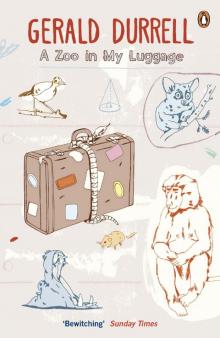 A Zoo in My Luggage
A Zoo in My Luggage The New Noah
The New Noah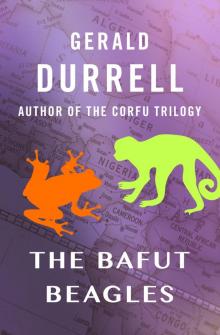 The Bafut Beagles
The Bafut Beagles Encounters With Animals
Encounters With Animals Catch Me a Colobus
Catch Me a Colobus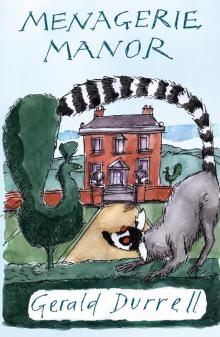 Menagerie Manor
Menagerie Manor The Picnic and Suchlike Pandemonium
The Picnic and Suchlike Pandemonium Ark on the Move
Ark on the Move My Family and Other Animals
My Family and Other Animals Two in the Bush (Bello)
Two in the Bush (Bello) The Stationary Ark
The Stationary Ark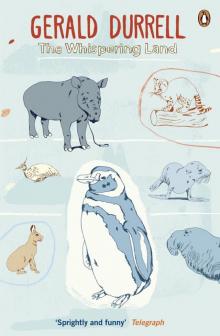 The Whispering Land
The Whispering Land Three Singles to Adventure
Three Singles to Adventure Fillets of Plaice
Fillets of Plaice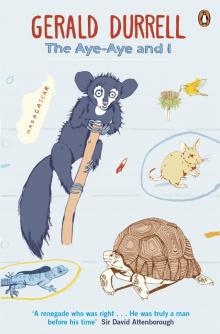 The Aye-Aye and I
The Aye-Aye and I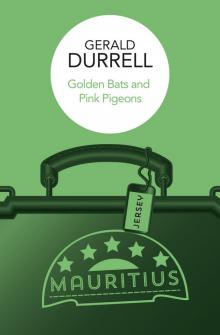 Golden Bats & Pink Pigeons
Golden Bats & Pink Pigeons The Drunken Forest
The Drunken Forest Marrying Off Mother: And Other Stories
Marrying Off Mother: And Other Stories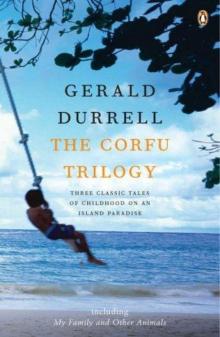 The Corfu Trilogy (the corfu trilogy)
The Corfu Trilogy (the corfu trilogy)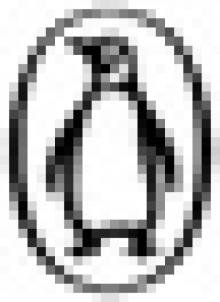 The Corfu Trilogy
The Corfu Trilogy Marrying Off Mother
Marrying Off Mother Two in the Bush
Two in the Bush